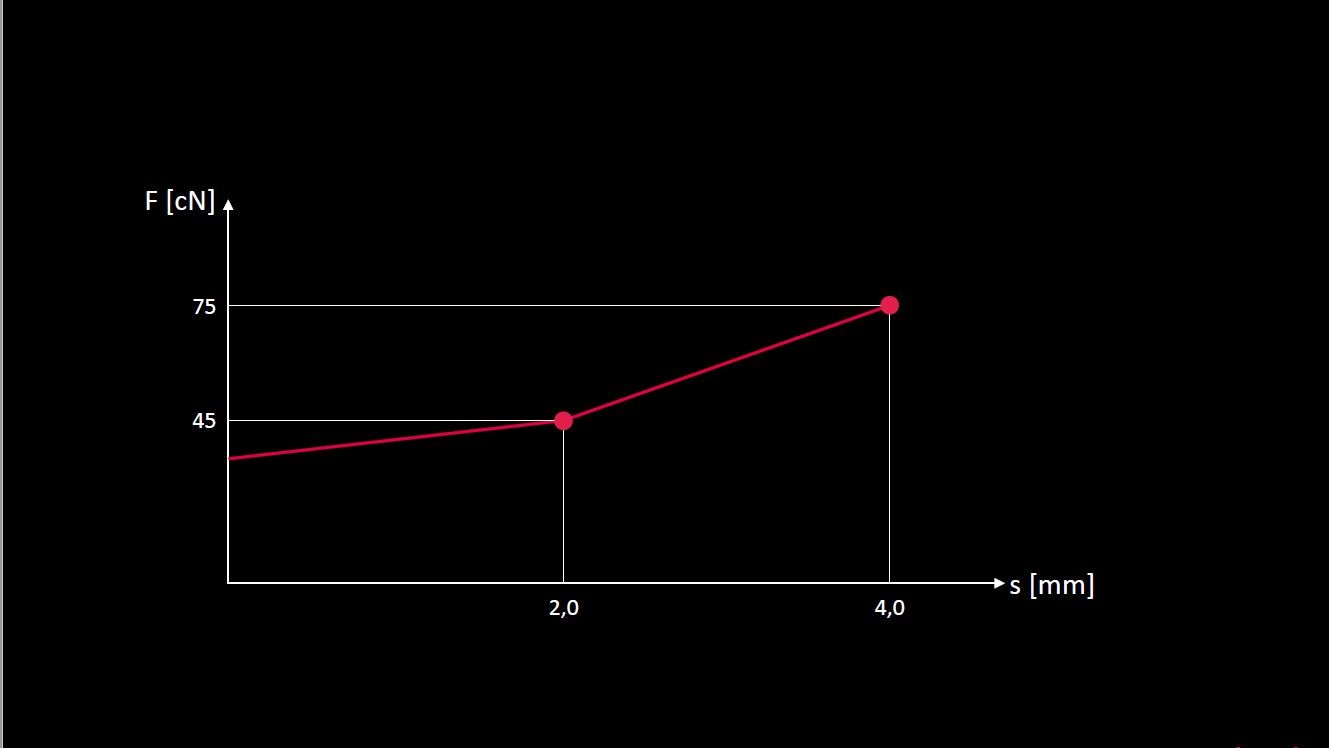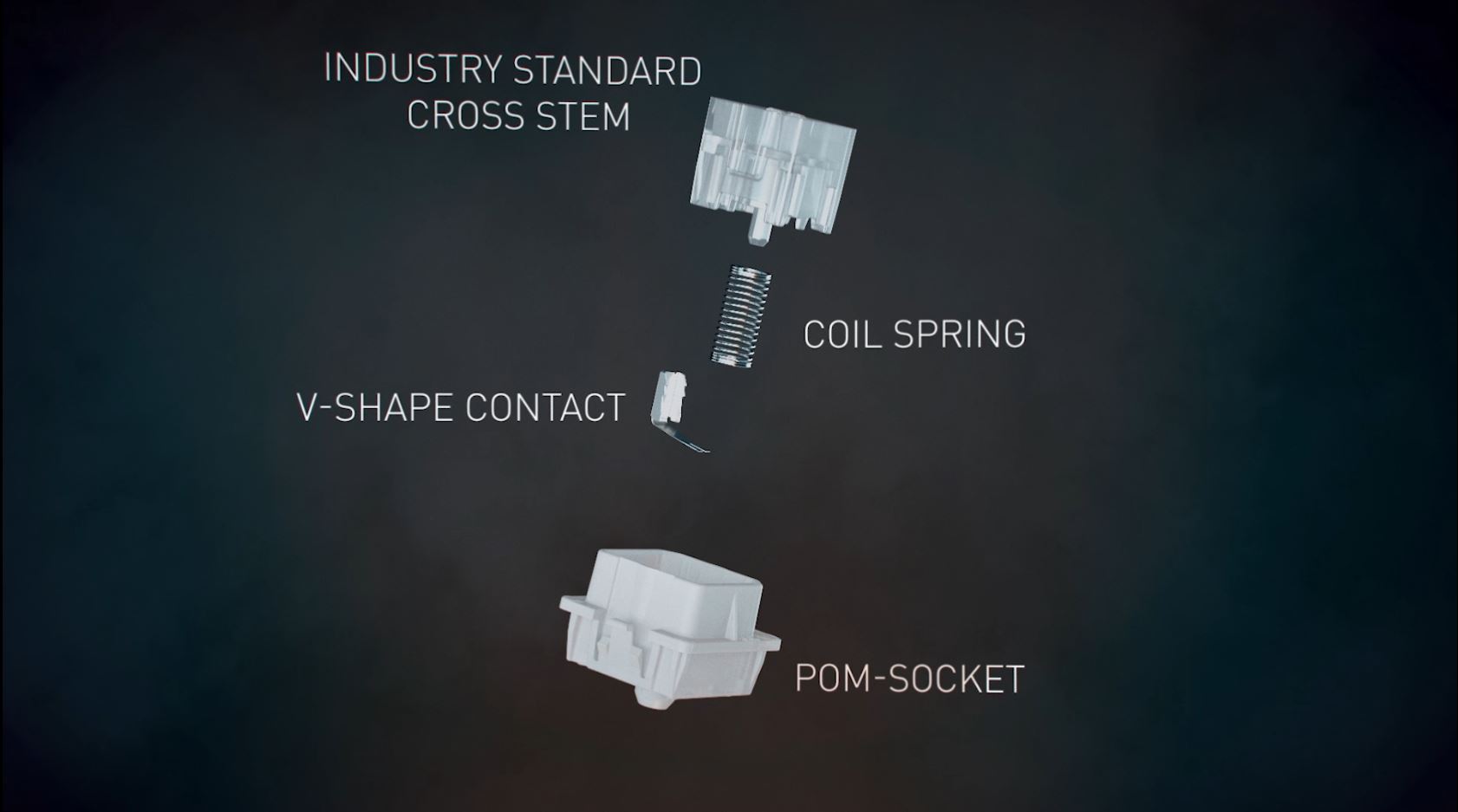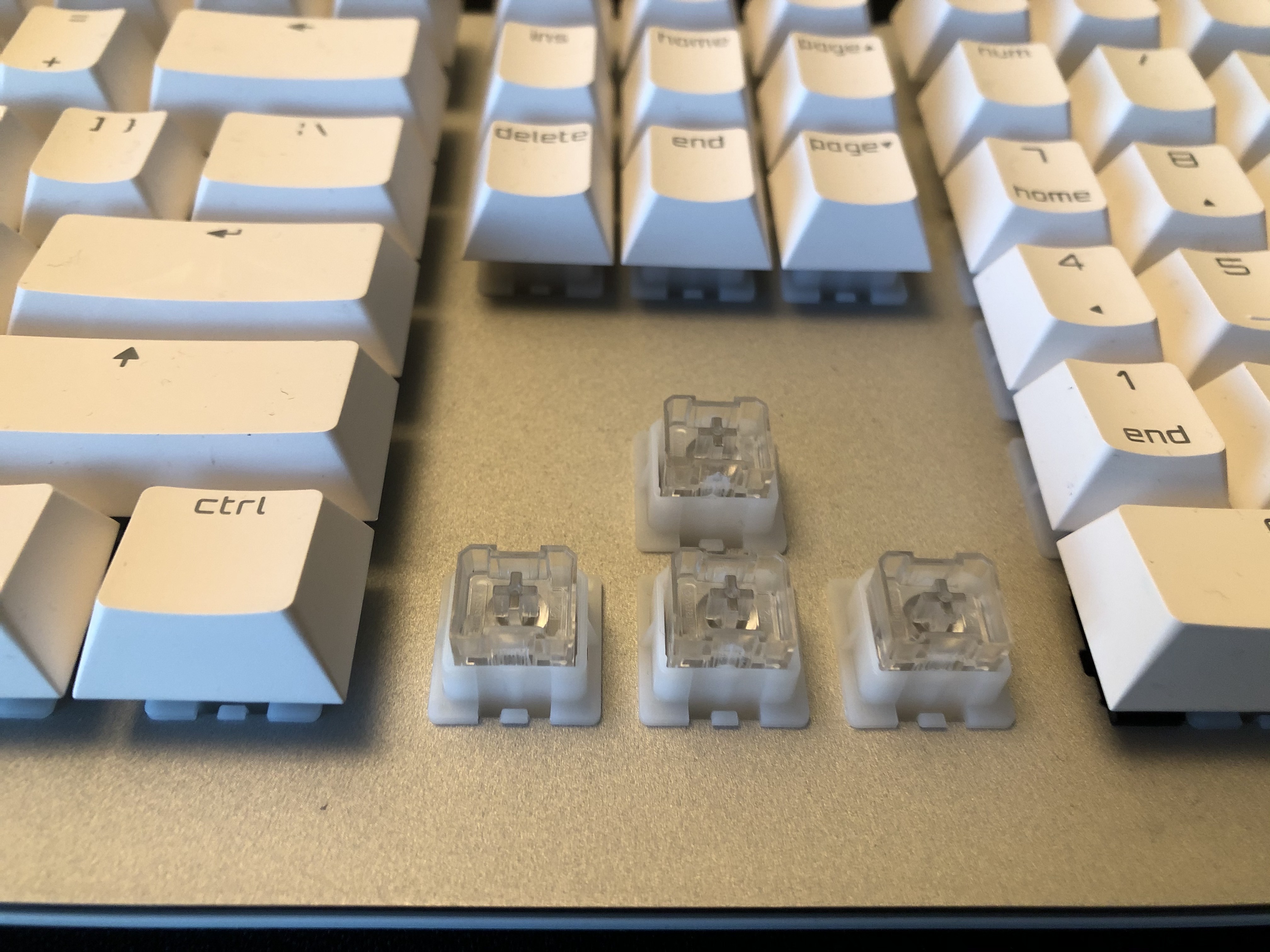New Cherry Viola Mechanical Switch Wants to End Membrane Keyboards
While mechanical keyboards offer the best typing experience, they come at a premium. It’s hard to find a good one under $100 and even harder if you want one from a well-known brand. Cherry, the maker of a range of switches used in mechanical keyboards, announced today a new switch type, the Cherry Viola, to serve as an option for budget keyboards. The hope is to do away with budget membrane keyboards entirely and offer a mechanical alternative at a comparable price.
Cherry’s looking to address the value side of the keyboard market, which it pegs as representing 65%, including sub-$100 options like membrane and rubber dome keyboards.

The Viola switch will offer keyboard vendors a cheaper option over the more gaming oriented Cherry MX line, which includes the popular switches such as the MX Red, Blue, Brown, and Speed SIlver. While some MX switches have as many as seven parts, the Viola only has four and uses materials that are less expensive, a Cherry rep told me.
In action, a prototype keyboard using the switches offered a less tactile and clicky feel than that we've experienced on other mechanical keyboards. It was somewhat quieter too, ideal for office environments. Yet despite those drawbacks compared to the MX line, it still didn’t have the mushy, low-profile feel of membrane keyboards.
Cherry Viola Specs
| Total Travel | 4mm |
| Pre-Travel | 2mm |
| Actuation Force | 45 cN |
| Characteristic | CrossLinear |
Part of what makes this switch more affordable is its solder-free design. It makes direct contact with the keyboard’s printed circuit board (PCB), helping alleviate costs for keyboard makers.
Cherry describes the Viola switch as CrossLinear with a fast reset. It uses a V-shaped bronze contact system with a cross-stem connecting the switch to the keycap. The cross-stem connection means the new switch is still compatible with any type of third-party keycap, regardless of factors like style and material, Cherry said, which also makes things easier for keyboard vendors to pick up the switch.
A socket made of POM plastic houses the switch, and there are eight “pillars” to prevent keycaps from feeling too wobbly. I tried wiggling the keycaps on the prototype keyboard equipped with Viola switches, and movement was very minimal, especially when compared to other budget keyboards in the market. This plastic is also supposed to prevent scratching during actuation.
Get Tom's Hardware's best news and in-depth reviews, straight to your inbox.

Cherry is expecting a lot of its partners, like Corsair, Cooler Master and G.Skill, to create value-oriented mechanical boards with the Viola switch. Pricing will depend on other features implemented of course, but Cherry expects basic products with the Viola to start at around $50.
Note that the Viola doesn’t incorporate that “MX” branding and represents a new family of Cherry switches. Cherry said it’s possible they will expand this new family in the future.
But don’t think that means Cherry’s neglecting its MX line either. It also announced today that its upgraded its MX Red, Brown, Black and Speed Silver switches to guarantee 100 million presses instead of 50 million and cut bounce time from 5ms to 1ms. And this is all without an increase in price. Cherry’s still working on updating its other MX switches, but it’ll take more effort to complete since they have additional moving parts, like an extra slider for clicky switches and a rubber component for silent switches.

Scharon Harding has over a decade of experience reporting on technology with a special affinity for gaming peripherals (especially monitors), laptops, and virtual reality. Previously, she covered business technology, including hardware, software, cyber security, cloud, and other IT happenings, at Channelnomics, with bylines at CRN UK.
-
daglesj To be honest too little too late...Shenzen has kind of caught up for a tenth of the price.Reply
Should have done this 5 years ago Cherry! -
Findecanor It looks like an updated version of Cherry MY, now with support for snapping into a top plate (for floating keys) and backlighting. But most of all, the force curve is not nearly as steep -- which had been its worst flaw, giving it widely disliked key feel despite being stable and smooth.Reply
